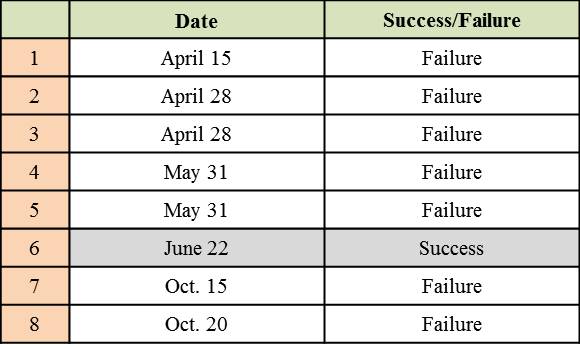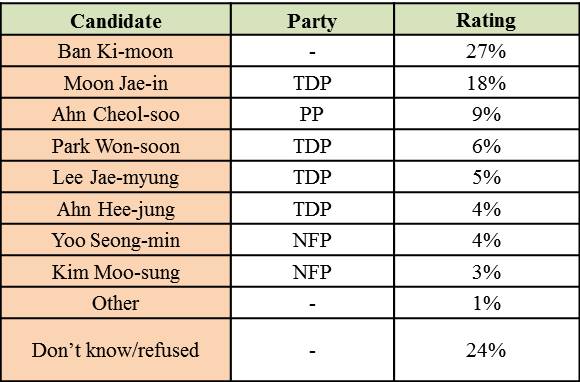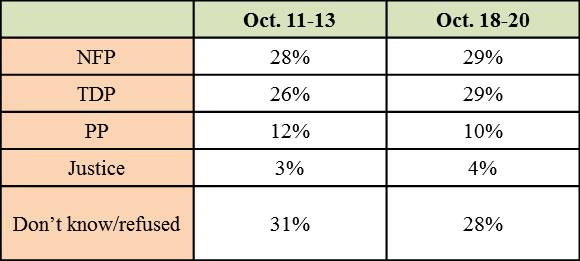Dealing with North Korea
Sanction on North Korean tourism
In the aftermath of the crackdown on Dandong Hongxiang Industrial Development Company, the United States and South Korea have begun to consider tightening sanctions on North Korea. Specifically, officials from both governments have identified tourism as an important source of funding for North Korea’s nuclear weapons program. In 2015, around 100,000 tourists visited North Korea, providing a significant sum of cash to the Kim Jong-un regime. One study estimated that North Korea profited between $40 to $50 million.1
According to the Korea Trade-Investment Promotion Agency (KOTRA), North Korea aims to increase the number of tourists to one million every year until 2017, and to two million by 2020.2 Profits coming from tourism could provide an important source of capital for the heavily sanctioned and cash-strapped country. If the United States and South Korea were to implement sanctions on North Korean tourism, however, they are likely to face opposition from China, given that 90% of tourists to North Korea are Chinese.
Foreign Minister Yun Byung-se also revealed during his meeting with US Ambassador to the UN Samantha Power that South Korea is considering independent sanctions on North Korea as well. Minister Yun added that the sanctions in consideration will be much stronger than the earlier sanctions that shut down the Kaesong Industrial Complex permanently.3
Continuing provocations
Oct. 10 marked the 71st anniversary of the founding of the Workers’ Party of Korea (WPK). Experts anticipated another major provocation leading up to this event, but North Korea refrained from any major action. On Oct. 15 and Oct. 20, however, it test fired two Musudan missiles—the 7th and 8th of its kind. Both missiles exploded soon after launch.4
The two missile launches were met with strong criticisms from both the United States and South Korea. Mr. Park Jie-won, floor leader of the People’s Party, criticized Kim Jong-un for “playing with fire” and for limiting options for South Koreans who support engagement with North Korea. He urged Kim to “come back down to earth.”5
North Korea’s Musudan Tests
Meanwhile, South Korea and the United States conducted a joint military exercise, Invincible Spirit, beginning on Oct. 10. The six-day exercise involved 7 US naval vessels (including the USS Ronald Reagan), 40 South Korean warships (including Sejong the Great), and numerous aircraft. The exercise took place in the three bodies of water surrounding South Korea and involved, among others, precision strike drills against North Korea’s military facilities as well as naval operations to detect and destroy North Korean submarines.6
On Oct. 19, South Korea and the United States also agreed to launch a high-level dialogue on extended deterrence. The decision to launch the Extended Deterrence Strategy and Consultation Group (EDSCG) was a product of the two-plus-two meeting between South Korean foreign and defense ministers, Yun Byung-se and Han Min-koo, and their US counterparts, Secretary of State John Kerry and Defense Secretary Ashton Carter. While specifics of EDSCG remain unknown, the dialogue is likely to be conducted at the ministerial level. Some have raised concerns that the EDSCG may conflict with other institutional mechanisms such as the Extended Deterrence Policy Committee (EDPC) and the Deterrence Strategy Committee (DSC).7
South Korea and China clash over illegal fishing vessels
On Oct. 7, a Chinese boat rammed into a South Korean Coast Guard vessel that was trying to capture another Chinese fishing boat for entering South Korean waters.8 While none of the Coast Guard were injured, the vessel capsized and the incident caused an uproar in South Korea. Around 40 Chinese boats that were fishing illegally in Korean maritime territory are known to have fled the scene.
Four days later, the South Korean Foreign Ministry complained to Chinese Ambassador to South Korea Qiu Guohong. Ambassador Qiu reassured the ministry that China was taking the incident very seriously and responsibly.9 The Chinese Foreign Ministry also urged the South Korean government to address this issue rationally.10 A few days later, however, the Chinese ministry announced that the South Korean Coast Guard had no legal right to police the area.11 The South Korean Coast Guard announced that it will now resort to using greater force in dealing with illegal Chinese fishing boats.
On Oct. 19, China announced that it is investigating the incident in accordance with Chinese law and is searching for the responsible vessel.12
Restructuring of Shipbuilding Industry
A McKinsey report on restructuring in the shipbuilding industry suggests selling or breaking up Daewoo Shipbuilding & Marine Engineering (DSME).13 Highlighting the principle of “private sector-led voluntary restructuring,” the Korean government solicited a third-party restructuring plan rather than designing one on its own. This report was commissioned by the association of shipbuilding firms for release in August.14
DSME, however, rebutted that the report is based on misguided assumptions and evidence. Clarkson’s Sept. report shows a rosier outlook. Clarkson forecasts that the big three companies would have contracts to build 750 ships over the next five years (2017-2021). This is significantly larger than McKinsey’s estimate of 550 ships.15 The different estimates are based on varying market prospects. Clarkson expects the industry to rebound globally as of 2018 while McKinsey estimates the recovery to begin after 2020.
DSME also criticized the McKinsey report for failing to provide new insights or recommendations.16 The company was especially critical of the short-sightedness of the report in recommending that DSME sell off the offshore plants.17 This recommendation is especially puzzling given that McKinsey recommended increasing investment on offshore operations only three years ago. One of the main reasons that the DSME has had to contend with its debt problem is that the company had followed through on this previous recommendation.18
With strong opposition from DSME, the Korea Offshore & Shipbuilding Association (KOSHIPA) is reviewing the draft of the McKinsey report.19 There is a growing concern that the government has neither taken full responsibility for the restructuring effort nor delegated the authority to the private sector. Meanwhile, both Samsung and Hyundai Heavy Industries have questioned whether the government’s true intention is to save DSME.20 Some news reports suggest that the government itself is split with the FSC, reportedly agreeing with the Clarkson report while MOTIE is siding with McKinsey.21
Park’s Approval Rating
Park’s approval rating has hit the bottom at 26%.22 Diplomatic turbulence caused by THAAD deployment and North Korea’s nuclear tests coupled with the economic downturn and Park’s unresponsive attitude over corruption suspicions on her close confidantes are all said to account for the recent dip.23 In the grand scheme of things, however, this is a typical pattern. The sitting president often loses public support in his/her fourth year under accusations of corruption scandals involving the president or his/her family and confidantes.24
Meanwhile, Mr. Ban Ki-moon is still riding quite a bit of public support ahead of the presidential election next year, followed closely by Mr. Moon Jae-in, Mr. Ahn Cheol-soo, and Seoul Mayor Park Won-soon.
Presidential Candidates Approval Ratings25
Contributing Staff(in alphabetical order): Han Minjeong, John J. Lee
Editor:J. James Kim, Ross Tokola
-
1.
“對北 ‘관광제재’까지 꺼내는 美… 돈줄 모두 막는다,” 조선일보, 2016년 10월 14일.
-
2.
“韓·美, 북한 관광도 제재 추진,” 조선일보, 2016년 10월 10일.
-
3.
“윤병세 ‘정부, 훨씬 강력한 대북 독자제재 검토하고 있다’,” 조선일보, 2016년 10월 10일.
-
4.
“북한, 무수단 추정 미사일 발사했으나 실패,” 한겨레, 2016년 10월 16일; “북한 8번째 무수단 발사 또 실패… 합참 ‘15일 실패 만회하기 위해 추가 도발’,” 중앙일보, 2016년 10월 20일.
-
5.
“박지원 ‘북한 무수단 발사 실패…김정은, 정신 차리세요’,” 동아일보, 2016년 10월 16일.
-
6.
“한미, 한반도 全해역서 ‘불굴의 의지’… 北도발 응징 메시지,” 동아일보, 2016년 10월 11일.
-
7.
“한미, 확장억제 전략협의체 신설 발표,” 경향신문, 2016년 10월 20일; “한미 ‘확정억제전략협의체’ 신설 의미는,” 동아일보, 2016년 10월 21일.
-
8.
“해경정 침몰시킨 中어선들… 한국 공권력이 공격당했다,” 조선일보, 2016년 10월 10일.
-
9.
“외교부, 추궈훙 주한 中대사 불러 ‘해경정 침몰 사고’ 항의,” 동아일보, 2016년 10월 11일.
-
10.
“中 ‘한국 해경정 침몰 건, 이성적 처리 요청’…안전처, 11일 단속 대책 발표,” 동아일보, 2016년 10월 11일.
-
11.
“中國 정부의 ‘해경정 침몰’ 적반하장,” 조선일보, 2016년 10월 13일.
-
12.
“중국 ‘한국 해경정 충돌 어선 조사중, 법에 따라 처리할 것’,” 경향신문, 2016년 10월 19일.
-
13.
“매킨지, ‘구조조정 대우조선해양, 살아남기 가장 힘들다,” 경향비즈, 2016년 10월 12일; “맥킨지 ‘대우조선 독자생존 어렵다…빅2로 판 짜야,” 조선일보, 2016년 10월 13일.
-
14.
Ibid.
-
15.
“750척이냐 550척이냐…조선업 수주 전망 논란,” 조선일보, 2016년 10월 19일.
-
16.
“매킨지, ‘구조조정 대우조선해양, 살아남기 가장 힘들다,” 경향비즈, 2016년 10월 12일; “맥킨지 ‘대우조선 독자생존 어렵다…빅2로 판 짜야,” 조선일보, 2016년 10월 13일.
-
17.
Ibid.
-
18.
“이랬다 저랬다…맥킨지의 못 믿을 조선업 컨설팅,” 한국일보, 2016년 10월 18일.
-
19.
“아무도 총대 안메는 造船 구조조정, 조선일보, 2016년 10월 15일.
-
20.
Ibid.
-
21.
“161013 보도해명 및 설명자료 (기재, 산업, 금융 통합,” 2016년 10월 13일.
-
22.
Gallup Korea, Date: Oct. 11-13; sample size: 1,026; margin of error: +3.1 at the 95% confidence level.
-
23.
“朴 대통령 지지율 26%…영남5060 이탈,” 조선일보, 2016년 10월 15일.
-
24.
“대통령 지지율 26%, ‘4년차 징크스’에 빠져드나,” 동아일보, 2016년 10월 15일.
-
25.
Gallup Korea, Date: Oct. 11-13; sample size: 1,026; margin of error: +3.1 at the 95% confidence level.
-
26.
Gallup Korea, Date: Oct. 11-13; sample size: 1,026; margin of error: +3.1 at the 95% confidence level.
-
27.
Gallup Korea, Date: Oct. 18-20; sample size: 1,018; margin of error: +3.1 at the 95% confidence level.

 Facebook
Facebook Twitter
Twitter

